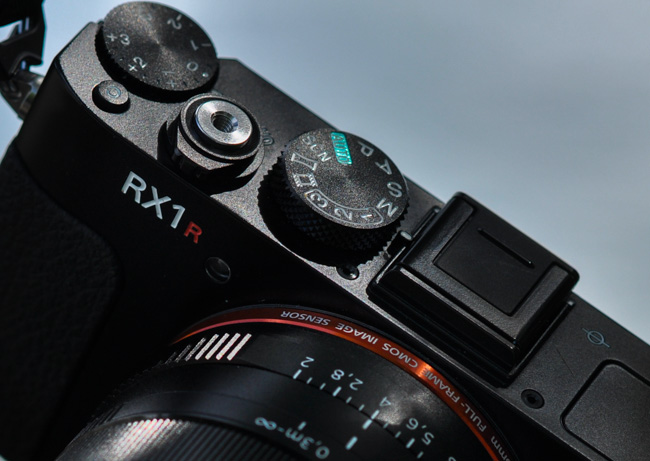

Privately at least, or not so privately, the Sony RX1R has stirred up a sentiment of discontent among many photography journalists, and the public. Many of them the type of users who harp on about how modern Leicas aren’t quite as ‘good’ as the rest of modern cameras, and see no value in artistic film grain. They see the RX1R a useless, tasteless exercise in frivolous excess.
This is something I never quite understand. Year after year, this sort of folk-the type who can be distinguished by their utilitarian haircuts, hourly posts on tech blogs, and biased support of Android systems-have argued that they want all new cameras to be faster, crisper, and better in every conceivable way than anything that’s come before it.
Well, Sony has done this with the RX1R, but instead of giving credit where credit’s due, they point to it saying that in a world of a less than perfect economy and greater disparity between the haves and have nots, where great cameras can be had for the price of an iPhone( ahem, S5) there is no place for such an ‘excessively’ priced non-DSLR. You wouldn’t believe the questions and criticisms I had to listen to when walking around with this thing. What’s more, is that when you speak to Sony reps, and I have, you feel that if they were given the option to design the camera now, it wouldn’t be quite what it is.
So what is it?

If I had to guess, I would say it’s a testbed for new camera form and technology in the same way that the McLaren P1 and Dyson’s newest vacuum are both works that push the edge of the envelope of what’s possible with electricity. In a way this is 20/20 in hindsight because the RX1R is not new, and it’s clear to see the lineage stemming from it in the form of the A7, and some extent the A-whatever-thousands. But as a testbed, is it just a collection of parts or something greater than the sum of? In other words, how does it perform?

It’s important to keep in mind that Sony is not one of the camera world’s Brahmin, as they don’t have a camera heritage. Not being a camera world thoroughbred, however, means it thinks differently, and does things differently. The camera world has largely been absorbed into the world of electronic technology now, and that, is Sony’s domain. What this camera is though, is a statement. It appears that it’s Sony being less concerned with sales, and more so about showcasing how serious it should be taken in its new corner. To do that, it had to be a performer, and my God it is.


Image Quality – The Cutting Edge
Sitting pretty with a full frame 24MP sensor, a matched-perfect 35mm f/2 Zeiss Tsonar lens, it has the hallmarks of one too, and in addition to that, the lack of an optical low pass filter. The benefits of this trifecta are impossible to ignore form the very first shot; Images from the RX1R are impossibly clear, detailed, sharp, and full of contrast – almost giggle worthy. It’s hard to imagine any DSLR with with a 35mm f/2 that would produce images of this standard. The D800E is the only one within shouting distance really, and that too must be done with really high end glass, so you’d be looking at a reproduction cost significantly higher than the price of an RX1R.


Sony maintains that the lens was built to match the sensor and the produce speaks to that. Color rendition is punchy and accurate, and the options under Creative Style are wildly varied, with some nice results. My favorite, stemming from my use of it with the RX100, is the High Contrast Black & White, and Rich Black & White. The images these render are beautiful, artistic, and comparable to black and white images I’ve seen from the Leica M Monochrome. The Leica has more tonal variance, but the Sony is undeniably striking, and sharp.


When viewing images at 100% crop is when you may think is the only time when the quality really shows, but you’d be mistaken. Even on a small screen, the sharpness and clarity blows most other cameras away. Removing the optical low pass filter generally means that there is likely to be more noise, especially at high ISO, but I challenge you to find real flaw in the RX1R’s images up to 5000 ISO. Yes, it’s a little grainy, and I do mean only a little, but it’s a price of clarity. What I would certainly say is to remove all image softening and noise reduction because if you don’t you’ll end up with images that defeat the purpose of having a camera like this.
Autofocus & Video
The autofocus of the camera is nothing to write home about. It’s good, but it’s not great. Especially today, it can seem on the slower end in low light, but the rewards when it hits are sweet, because when it hits, it hits sharp. Of course, if you don’t want to autofocus, you can manually focus with a focus ring on the lens itself, which is equally sweet to maneuver.


The main focusing issue to be had with the RX1R is the distance limiter ring on the lens. It’s just you have to remind yourself to select the position for close focusing, and then select out of it for regular shooting, and this is something you’re prone to forget. You’re also somewhat prone to hitting it by accident, especially during video, from my experience. Sure, the RX1R is not really a video camera, but it shoots much like the RX100 with 1080 smooth AVCHD. On the subject of video however, it should be noted that the lack of optical low pass filter and resulting possibility for moire is much more a concern for video shooters, and as such, if you’re into video, you may want the regular RX1.



Standard stats are 24mp full frame sensor, paired with a fixed 35mm Zeiss 35mm f/2 Tsonar lens lacking an AA filter, in a small compact body. What more is there really to know? Well, for one, it’s missing an external charger in favor of on camera charging, and for the price, this is nuts. And you’ll need a charger too because this camera uses the same battery as the RX100 series and it dies quicker on this. Prepare to keep spares with you.
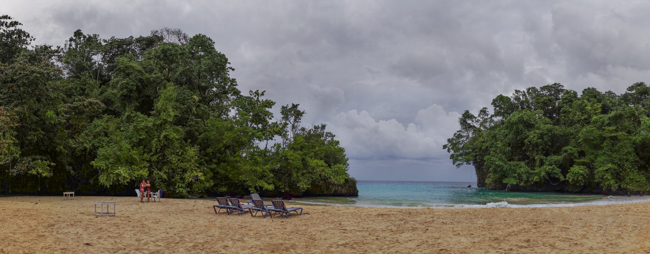

Oh, the sensor does good work with collecting data in RAW, and allowing for details to be added back in post:



This is really where there is clearly some confusion. Those who designed this probably spent countless hours in front of various LCD screens neglecting wives and children trying to find the uniting point between compact and utility. What they ended up with though, is somewhat of a confused body.
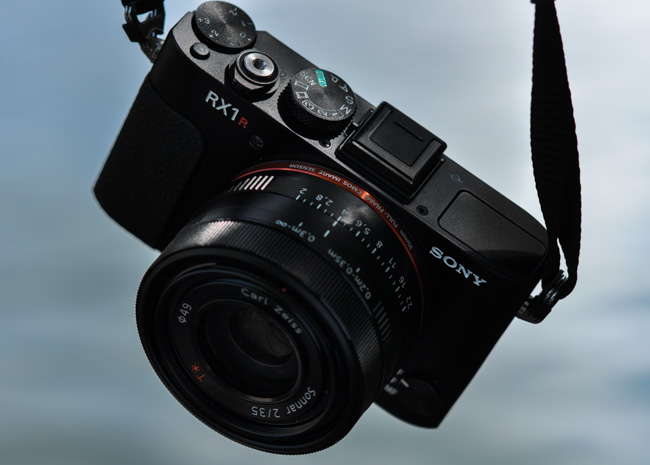
Looking at its form, you immediately see a compact, and almost expect it to perform as such. Regardless of what it says on the box, you don’t expect it to be able to do what it does – create pictures with few quality rivals. The size suggests an urban shooter, and Sony has even tried to market it as such with a horrible video filmed in Toronto’s St. Lawrence Market area with young people speaking highly of it as a street shooter, while admitting they knew little of the technical sides of photography. But this isn’t a camera for them. No one like that is going to drop 3 grand on this camera, and realistically, this is a serious camera, and the serious shooters are the ones who will appreciate it.


It is actually remarkable as an urban street shooter, however. It’s understated, and handsome, but it won’t draw attention. Make no mistake however, it’s not a pocketable compact. That 35mm is a beast, and regardless of the small body, prohibits it from being in anything other than the pockets of an NBA player’s suit.
That lens too, while brilliant, and being 35mm, the standard for an old rangefinder and thus street photography, makes you sometimes wish for a 50. Part of me wishes Sony would create something like Fuji did for the X100 where an external addition could be used to convert it to give more reach. the problem with that here, is you’d likely lose all benefits of the sensor and lens pairing – at which point, you’ve lost most of what makes this special.
Layout
The button layout is again nice, and reminiscent of a Fuji X series. The dials are intuitive and with a build quality that leaves Fuji in the dark. Every movement has a pleasing touch, and each feels deliberate. The video button lays on the outskirts of the rear controls so you won’t hit it by mistake, which is nice since, as mentioned above, you’re likely not going to be using this button often.
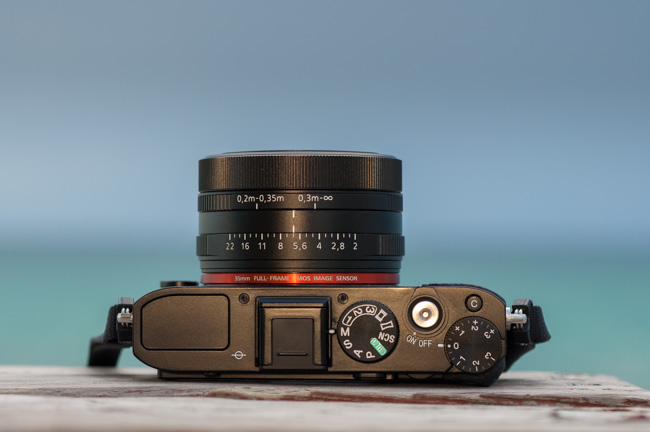

Overall, it’s obvious that placement of all buttons and switches and dials were all done with the best ergonomics in mind, but given its size, it would surely benefit from having a more solid grip. A little lip on the front and rear would make this feel much more secure for anyone, much less someone like me with large hands and piano fingers.

Looking at the camera, it’s clear that build quality was second only in focus to the image quality, but nothing quite prepares you for picking it up. There’s some serious heft. I’ve likened the sensation before to reaching for a small bottle of mercury in a science lab thinking it’s filled only with water. The surprise in weight catches you off guard, but in a good way.
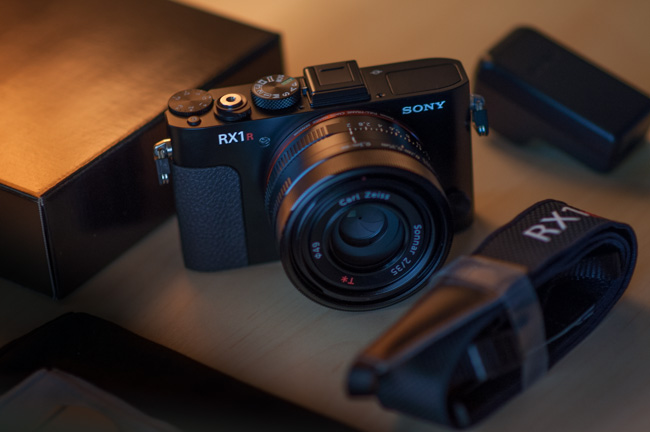
The body feels machined out of a solid slab of metal, and polished like a gemstone. Each facet of the exterior is completely solid, and feels old school mechanical rather than new digital. The lens, of course, adds to all of this, and it too, is a thing worthy of admiration. Each click of the manual aperture ring will leave you thankful for having opposable thumbs and tactile fingers just to appreciate the sensation.
Without question, it’s a quality camera, and it feels as expensive as it is. Short of Leica, I can’t think of a contemporary.

Yes. It costs almost $3,000, and that( for a compact) may have some of you balking. That’s understandable, and much more so have you never picked one up or shot it for a day. You may be thinking now, that upon entering a Sony store you’d walk right up to the RX1R, then right past it to the A7 table to get full frame imagery with an EVF, and interchangeable lenses for half the price, almost. I wouldn’t begrudge you, as the A7 is one of my favorite cameras. The thing is though, they’re not alike at all. They’re meant for two entirely different types of people.

This is really where the criticisms I spoke about at the start, stem from. The people who believe the value of a camera lays in its ability to be a jack of all trades combined with price, will really not understand the RX1R, or appreciate it. They will criticize the fixed lens, and the cost, but if I were Sony, I wouldn’t be pandering to the whining and insults, or half apologizing for the skunk-works masterpiece my engineering and design team had created. No, I’d be on the roof hailing it for what it is: One of the best and surprising cameras ever. Yes, it’s expensive, and yes, you’ll get ridiculed by some who just aren’t in the know, so to own one you have to have a thick wallet, and thick skin, but you’ll feel good that you get ‘it’ and they don’t.
It’s the sharpest camera I’ve ever shot with. It surprises you with its ability to isolate a subject as well as it can, from something in such a small form factor. It never draws the wrong kind of attention, and it somehow seems to handle anything thrown at it with the accuracy and delicacy of a ballet dancer’s feet. Simply, it’s incredible.


Sure, there’s no EVF, which is really annoying and my biggest complaint; the lens cap pops off frequently, and the JPEG files can be a bit odd. And yes, each accessory from the carrying case to the hotshoe EVF costs so much you half expect them to be made of myrrh, and you can’t help wishing sometimes the focal length was a 43mm or a 50. As a perfect system, then, it can be thought by some, that it needs a bit of work. But as an achievement? It’s astonishing.
That it’s about to be retired may be sad, but what it also says is that there may be a drop in price soon, in which case I’ll be there to catch it. And frankly, it’s still utterly relevant right now, and its death seems a bit premature. Many out there may be saying its death is warranted and shows it was never really needed. Nonsense. Consider this, many a dinosaur met a premature end, but museums the world over would be far less interesting had they never existed at all.
Get yours here






Get Connected!